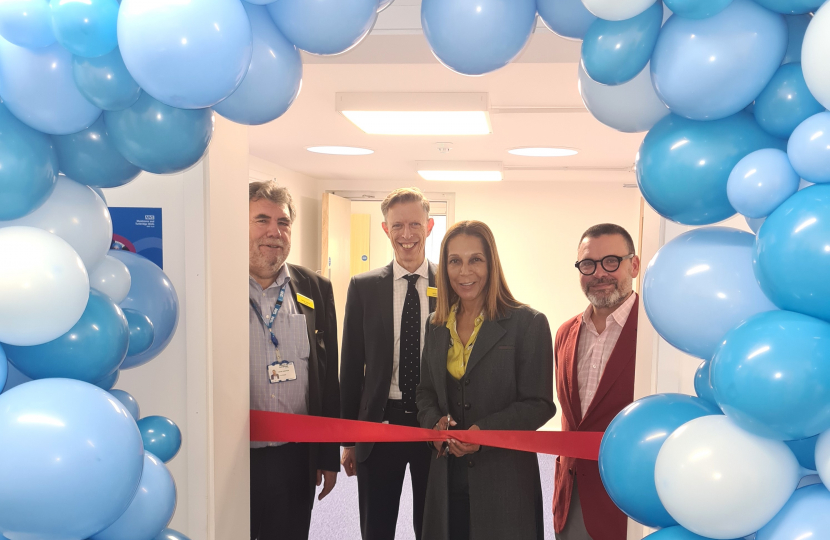
Every day, on average, 600 patients enter the doors of the two NHS hospitals serving my fabulous constituency of Maidstone & The Weald. Be it a life-threatening accident or simple indigestion, and everything in-between, almost all patients arrive at the two A & E departments in Pembury and Maidstone. There they are triaged and taken to rapid assessment, minor injuries, same-day emergency care or, for about 150 a day, transferred to a hospital bed in Primary Care.
The effective management of the 700 available beds in the two hospitals is therefore critical and this week I witnessed nothing less than a miracle of tech and teamwork at Maidstone and Tunbridge Wells NHS Trust (M&TW).
Over the last two years they have been developing a digital system that is now making trailblazing efficiencies, transforming patient experiences and outcomes. I had the honour of formally opening Maidstone Hospital’s new Care Co-ordination Centre this week, to see at first-hand this new technology and meet the staff who make it work.
Bed management was previously handled by nurses walking around the wards, with a pencil, eraser and note pad, looking for empty beds. They’d have to make numerous phone calls, find porters and cleaners and liaise with new admissions to allocate a clean empty bed to a new patient – a process that typically left a bed empty for about 2hrs and 40 minutes
The new Tele-Tracking system has reduced bed ‘downtime’ to just 60 minutes. Better still, the time a patient waits in the emergency department before being transferred to a bed has reduced from around 100 minutes to 40 minutes, and even less.
The process has all but eliminated the need for patients to wait in ambulances to be admitted and is presently saving around 130 bed-days each month.
Management control takes place in a room reminiscent of an Air Traffic Control Centre, and it took my breath away when I entered the room. A substantial wall of large-scale monitors actively displays the work of the tracking management team and much of the process is automated. A discharged patient’s ‘Radio Frequency ID’ wrist band is placed in an ‘outbox’ which detects the patient is leaving. The system instructs porters and cleaners, and informs ‘control’ at each stage of the ‘empty bed process’, until it is ready for a new patient.
M&TW are one of only four NHS trusts in the UK to have developed and implemented such a system, and they are now the first to extend the same bed monitoring facility to four community hospitals in their catchment – with a further 80 beds. All of this supports the timely discharge of patients from the Trust’s acute hospitals, freeing up more beds more quickly, and allows medical professionals to focus on patient care instead of bed management.
The bold and exciting way the Trust is embracing technology should be celebrated. It forms a significant component of their success in handling record attendances in A & E and I wholeheartedly applaud the team as they continue to be one of the best performing hospital trusts in the country.


